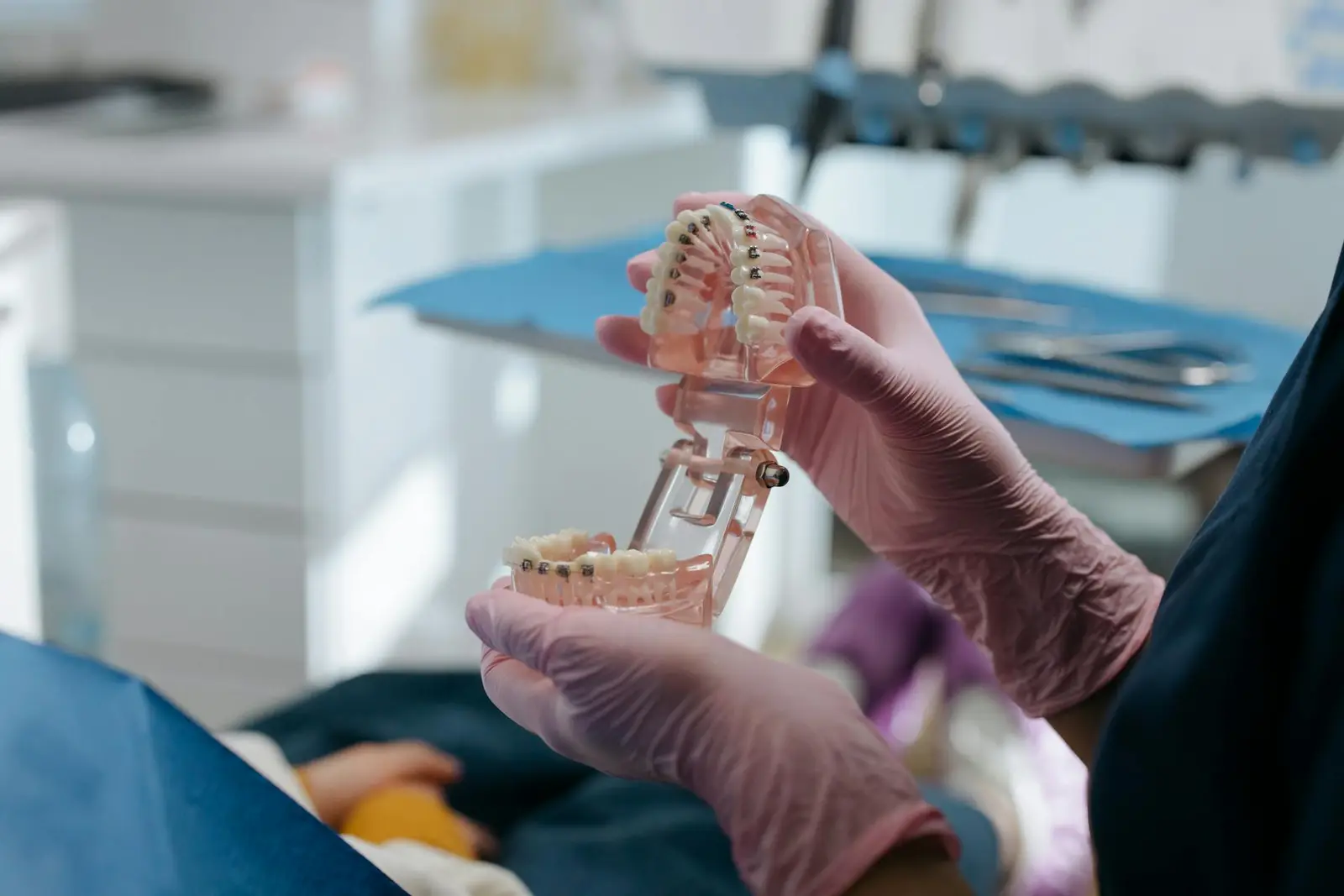Orthodontics
Table of Contents
Key Points
- The field of orthodontics has a long and interesting history, beginning in ancient civilizations.
- A turning point in the evolution of orthodontics and orthodontic care was the use of wax impressions during the 17th century.
- The Father of Orthodontics, Edward H. Angle, made several important contributions to the field of orthodontic care, including a device known as the bandeau.
- Braces are still common today, but they share space with clear aligners, widely known as Invisalign.
- Modern orthodontic patients are enjoying a golden era in the history of orthodontics, and the field is still evolving.
When you think of ancient history, orthodontic devices like braces and modern aligners might not be present in your mental picture. However, the field of orthodontics has a surprisingly long history that dates back to ancient civilizations. This particular subfield of dentistry has undergone many changes and technological advancements, from the primitive wire bands of Cleopatra to aesthetically pleasing modern orthodontic devices like Invisalign.
From the Barber’s Chair to the Orthodontist’s Office
Did you know that you used to have to visit a doctor or even a barber for orthodontic treatment? The field of orthodontics has come a very long way. Learning about the milestones and turning points in orthodontic history may give you a true appreciation for the treatments and devices we enjoy today when we visit our orthodontist’s office.
Reading about the evolution of orthodontics might also spark a curiosity for what’s to come in this fascinating field. Throughout the historical orthodontic timeline, people enjoyed the most modern treatments available at that time. It makes one wonder how far the field can go and where the boundaries are, if they exist at all.
Orthodontics Is Indeed Ancient History
The earliest interest in straightening teeth can be traced back to ancient civilizations. Archaeologists have discovered Egyptian mummies with metal bands and catgut tied around their teeth. [1] These early orthodontic appliances appeared to be put on the teeth after death so the person would look better in the afterlife. There is no evidence that ancient people used orthodontic devices prior to death or burial.
The Etruscans and Golden Mouth Guards
The Etruscans (ancestors to the Romans) used golden mouth guards for similar purposes and to keep women’s faces from collapsing due to decomposition. The well-known Greek doctor Hippocrates advised parents to push newly emerged teeth into place in their children’s mouths as they were forming to create a nicer smile.
Although this was a fascinating time in the history of orthodontics, there was still much work to be done to bring the field to anything close to what it looks like today.
17th & 18th Century Orthodontia
There was almost no other progress in orthodontia until the 17th and 18th centuries, when the evolution of orthodontics really began to pick up steam. Perhaps the most important contribution to orthodontia during the 17th century was the use of wax dental impressions. Although this procedure is no longer used today, many historians consider this the birth of modern orthodontics.
Meet the Father of Dentistry, Pierre Fauchard
Not long after dental impressions took the stage, another dentist and innovator, Pierre Fauchard, stepped into the spotlight. Fauchard famously created the bandeau—a U-shaped device designed to realign crooked teeth by widening the arch. Thanks to his remarkable invention, Fauchard became known as the Father of Dentistry. Fauchard also published a groundbreaking book entitled “The Surgeon-Dentist.”
The contributions of Etiene Bourder, Dentist to the King
Another significant contribution to the evolution of orthodontics was made during this time by Étienne Bourdet, who served as the personal dentist to the King of France at the time. Bourdet is credited with the concept of removing teeth to prevent crowding. [2] This technique is still routinely used in orthodontic treatment today and is an important piece of the history of orthodontics.
19th Century Orthodontic Advancements
A significant stride toward modern orthodontics occurred in 1819 with the invention of the wire crib by Christophe-Francois Delabarre. In the mid-1800s, Norman Kingsley published a book titled “Oral Deformities,” considered the first effort to document orthodontic problems and their solutions. Then, toward the end of the 19th century, Edward Hartley Angle began to develop orthodontic appliances based on the properties of malocclusion. For his work, he was named the Father of Modern Orthodontics. [3]
20th Century: The Development of Braces
Edward H. Angle continued to play a key role in the development of orthodontic devices and procedures well into the 20th century. Notably, he developed a revolutionary classification system for malocclusion and founded the first orthodontic school known as the Angle School of Orthodontia. Before then, orthodontic procedures were usually performed by doctors or barbers.
More about Edward H. Angle
Angle went on to open three other schools throughout the United States. He also founded the first scientific journal centered on the field of orthodontics, entitled The American Journal of Orthodontics. The publication of this journal began the practice of setting and following standardized treatment methods in the field of orthodontics based on research.
Beginnings of Modern-Day Braces
During the 1950s, X-rays were used to diagnose orthodontic issues. The beginnings of modern braces didn’t begin until the 1970s, though. Braces during this time were rudimentary, not like they are today. Wires were wrapped around each tooth to create brackets. This development was soon improved upon by the invention of dental adhesives, eliminating the need for wires. This marked another high point in the evolution of orthodontics, but more was yet to come.
Modern Day Orthodontics: Invisalign
In modern society, a greater range of treatment options is available for orthodontic care. Braces are still widely used today, but another device has also become quite popular—Invisalign. Invisalign uses clear trays and brackets. As the name implies, these orthodontic appliances are meant to be invisible, reducing the stigma of wearing braces.
There’s No Better Time to Improve Your Smile
If you’re concerned about the appearance of your teeth, you’re lucky to live in the era of modern orthodontics. You can now deal with the issue of straightening your teeth before you die, unlike the ancient Egyptians.
Plus, it wasn’t so long ago that braces were a lot more complicated to put on and care for. Today, a wide range of treatment options is available for individuals seeking to enhance their smile. We have the pioneers who made their mark on the history of orthodontics to thank for that.
Frequently Asked Questions About the History of Orthodontics
Below are some of the most frequently asked questions regarding these the history of orthodontics
When did humans start needing braces?
The problems of malocclusion and tooth misalignment have always existed. Methods used to correct these problems can be traced back to ancient civilizations, including those of the Greeks, Romans, and Egyptians.
What were some early methods used in orthodontics before modern braces?
The use of wire bands, animal intestines, and primitive wire bands were all tried in the past as early orthodontic methods. During the medieval period, people even tried filing down the teeth to make them more symmetrical.
When were clear aligners invented?
The modern-day clear aligners that we know today as Invisalign were invented in 1997 by two students from Stanford University. Many people find this alternative to traditional braces more aesthetically pleasing and more comfortable.
What matters most about orthodontic treatment?
It depends on who you ask. Most orthodontists would say the effectiveness of orthodontic treatment is what matters most. Patients might disagree, though. They may prioritize the cosmetics of orthodontics or the convenience of treatment.
How can we educate more orthodontists?
There is a high demand for orthodontists in the United States. Many different techniques might help increase the number of trained orthodontists in this country, including more university programs, increased enrollment in existing programs, and continued education resources from the American Association of Orthodontists (AAO) and other professional organizations in the field.
How did they straighten teeth in the 1700’s?
In the 1700s, orthodontists straightened teeth using a device called the bandeau. Created by Pierre Fauchard, this device worked by expanding a person’s arch.
What’s the most important contribution to modern orthodontics?
It’s difficult to say what the most important contribution to orthodontic care today is. If you ask a dozen scholars this question, you might get a dozen different answers. In truth, each contribution is significant, and combined, they make up the unique history and evolution of orthodontics as we know it today.
How long do I have to wear braces or aligners?
Your length of treatment will depend on a variety of factors, including the condition of your smile and how well you wear your elastics and/or retainers.
Should I get braces or aligners?
The best orthodontic treatment for you depends on your individual needs. Aligners like Invisalign work for many orthodontic issues, but not all. The best way to determine the most appropriate treatment is with a free consultation.
Get The Smile Of Your Dreams With Austin's Best Orthodontics Team!
We offer orthodontic treatments plans for all ages. Schedule your free consultation now to learn about your options!The Kunik Orthodontics Editorial Guidelines
We prioritize reliability and accuracy by upholding strict editorial standards.
Our commitment to thorough vetting ensures you receive up-to-date and reliable information across every topic in our library. This commitment is driven by our mission to provide superior care and knowledge to all of our orthodontic clients.
By maintaining high standards, we strive to deliver consistent and trustworthy information, offering comprehensive orthodontic care and knowledge to our clients, their families, and anyone searching for accurate information.
Read More About Our ProcessSources
[1] Norman Wahl a, a, Orthodontics had its beginnings in the time of the ancient Egyptians, Weinberger, B. W., & Asbell, M. B. (2005, March 3). Orthodontics in 3 millennia. Chapter 1: Antiquity to the mid-19th century. American Journal of Orthodontics and Dentofacial Orthopedics. https://www.sciencedirect.com/science/article/abs/pii/S0889540604010030
[2] Interesting facts from the history of Orthodontics | Colgate®. (n.d.). https://www.colgate.com/en-us/oral-health/early-orthodontics/interesting-facts-from-the-history-of-orthodontics
[3]Peck S. (2009). The contributions of Edward H. Angle to dental public health. Community dental health.., 26(3), 130–131. https://pubmed.ncbi.nlm.nih.gov/19780351/
Amanda Stevens is a highly respected figure in the field of medical content writing. Amanda earned a Bachelor of Science degree in Social Work from Purdue University, graduating Magna Cum Laude, which serves as a strong educational foundation for her contributions.

